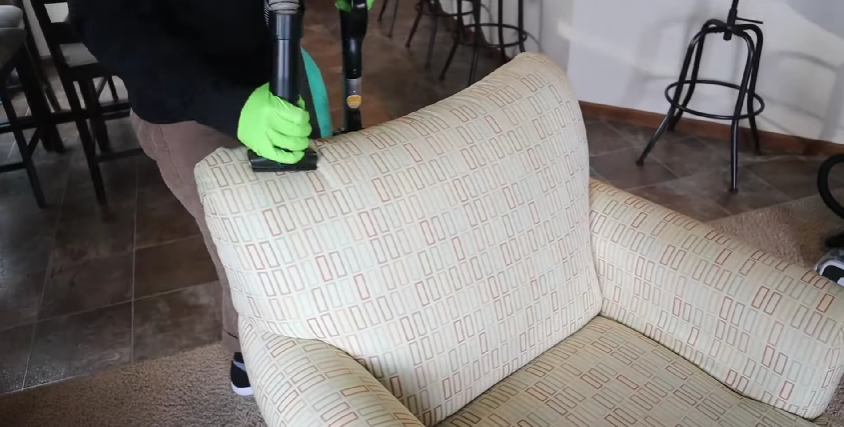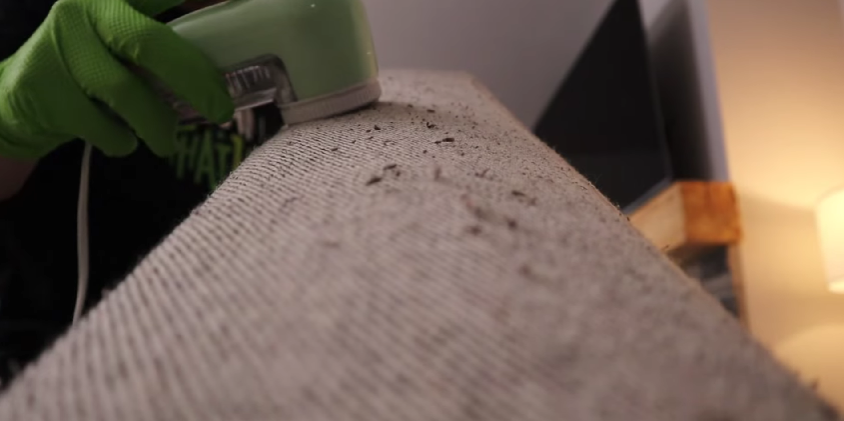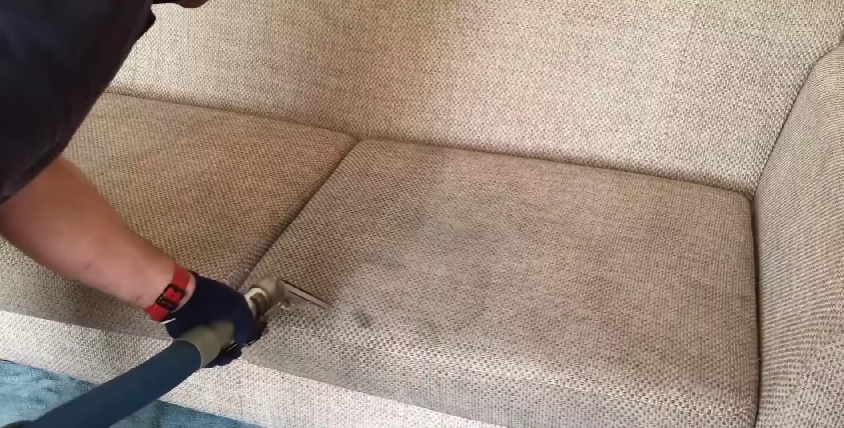Upholstery cleaning is the process of deep-cleaning the fabric, padding, and textiles on furniture like sofas, armchairs, ottomans, and car seats. It removes dirt, dust, allergens, stains, and odors trapped in the fibers. Unlike surface-level vacuuming, true upholstery cleaning restores both cleanliness and appearance, increasing the lifespan of your furniture.
Why Upholstery Cleaning Matters
Over time, upholstery absorbs body oils, pet dander, food crumbs, and airborne contaminants. If left untreated, this buildup causes odors, discoloration, and even respiratory issues.
Professional or proper DIY cleaning removes hidden debris, making your home healthier and your furniture look brand new. Regular cleaning also delays wear-and-tear, preserving your investment.

Common Upholstery Materials and Their Cleaning Needs
Different upholstery types require different cleaning methods:
Fabric Upholster
Natural fibers (like cotton and linen) are breathable but stain-prone. They need gentle water-based cleaners and air drying.
Leather Upholstery
Leather must be cleaned with pH-balanced products. Over-wetting or harsh chemicals can dry it out or cause cracking.
Microfiber and Synthetics
Durable and stain-resistant, synthetics like polyester and acrylic can typically handle steam or foam cleaning methods.
Upholstery Cleaning Codes Explained
Most furniture includes tags with upholstery cleaning codes to help you choose the right method:
W – Use water-based cleaning agents.
S – Use solvent-based cleaners (no water).
WS – Safe to use either water or solvent cleaners.
X – Vacuum only; no liquids or solvents allowed.
Ignoring these codes can lead to discoloration, shrinkage, or irreversible fabric damage.
Requirements Before Cleaning Upholstery
Before starting, make sure you:
Check the fabric's cleaning code.
Perform a spot test in a hidden area.
Vacuum thoroughly to remove loose debris.
Use proper tools: upholstery cleaner, soft brushes, microfiber cloths, and extraction vacuums.
Ensure good airflow for faster drying.

Ways to Clean Upholstery
DIY Upholstery Cleaning
Great for light maintenance. Techniques include:
Vacuuming regularly with a soft brush attachment.
Spot cleaning with diluted vinegar or mild detergent.
Baking soda to neutralize odors.
Portable carpet cleaners with upholstery attachments.
Professional Upholstery Cleaning Services
Experts use advanced tools and techniques tailored to your furniture:
Hot water extraction (steam cleaning)
Dry foam or shampooing
Low-moisture encapsulation
Solvent-based dry cleaning (for S-code fabrics)
Professional services can reach deeper layers and remove stubborn dirt safely and efficiently.
Upholstery Stain Removal Techniques
Not all stains are created equal. Here’s how professionals and savvy DIYers tackle the most common:
Pet stains & odors: Use enzymatic cleaners.
Wine & food: Dab with white vinegar or baking soda paste.
Ink & grease: Use rubbing alcohol or dry cleaning solvent (on S-code fabrics).
Avoid scrubbing, which can damage fibers and embed the stain further.
Pros and Cons of Upholstery Cleaning
Pros
Extends the life of furniture
Enhances indoor air quality
Removes allergens and bacteria
Improves visual appeal
Cons
DIY mistakes can damage fabric
Some methods require long drying times
Professional services may be costly
How Often Should You Clean Upholstery?
Every 12–18 months for average use
Every 6–8 months for homes with pets, kids, or allergies
Immediate spot cleaning after spills
Regular vacuuming once a week prevents embedded dirt and slows fabric degradation.

Eco-Friendly Upholstery Cleaning Options
Environmentally conscious cleaning is on the rise:
Use plant-based, biodegradable cleaners
Choose services with green certifications
Avoid harsh chemicals that harm indoor air quality
DIY options like vinegar, baking soda, and Castile soap offer effective, non-toxic alternatives.
Upholstery Maintenance Tips
Apply fabric protector spray after each clean.
Rotate cushions to distribute wear evenly.
Keep furniture out of direct sunlight to avoid fading.
Vacuum weekly to prevent buildup.
Treat stains quickly before they set.
Maintenance is just as important as deep cleaning for longevity.
Final Thoughts: Is Upholstery Cleaning Worth It?
Absolutely. Whether you're preserving a designer sofa or refreshing a budget couch, upholstery cleaning revives comfort, hygiene, and style. From stain removal to allergen control, regular cleanings are a smart, cost-effective way to extend your furniture’s life and improve your living space.
Investing in proper care, whether DIY or professional, means your furniture looks better, lasts longer, and feels cleaner every day.

